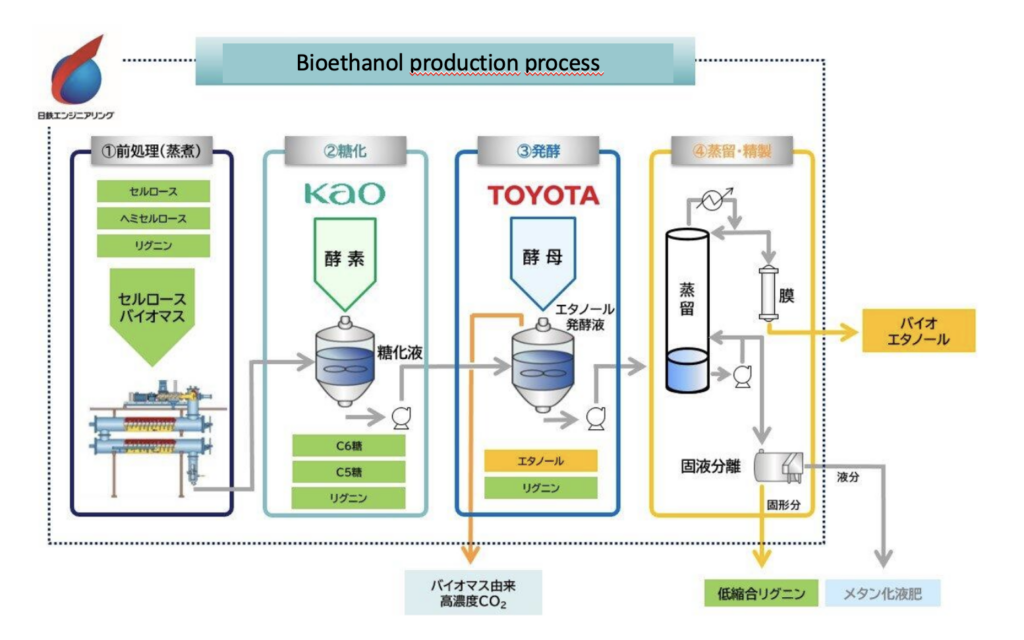https://www.eng.nipponsteel.com/news/2023/20230602.html
The Next Generation Green CO2 Fuel Technology Research Association is a research association formed by ENEOS, Suzuki, Subaru, Daihatsu, Toyota Motor, Toyota Tsusho, and Mazda, and has been developing bioethanol for some time. The facility is expected to be fully operational in 2024.
Kao will supply saccharification enzymes used in the production of bioethanol for automobiles. The enzyme produced by the company will be introduced into the development of a mass production method for bioethanol made from inedible agricultural crops. The company has a technology to produce a cocktail of enzymes at low cost by recombining the genes of filamentous fungi, and this technology will be utilized. Kao’s enzymes will be used in the bioethanol production research in Okuma Town. While details are undisclosed, the plan is to cultivate herbaceous inedible biomass on the town’s farmland and use it as a raw material. The bioethanol production flow is as follows: (1) pre-processing the biomass by crushing, etc.; (2) saccharification by enzymes acting on the pre-processed crops; (3) fermentation of the sugars to ethanol using yeast; and (4) distillation and refinement of the ethanol. Kao supplies the enzymes used in step (2), the saccharification of agricultural crops.
Kao is strong in enzyme production and fermentation using microorganisms, including the use of Bacillus subtilis to produce enzymes used in detergent production and the production of bioethanol from agricultural crop residues. The enzyme to be used in this project will be produced by Trichoderma, a type of filamentous fungus that the company has been developing. The company has the technology to create a cocktail of enzymes at once by introducing multiple glycosyltransferase genes into filamentous fungi or by modifying existing genes. The new glycosyltransferase is also a cocktail of about 10 different enzymes. The production volume of each enzyme has been optimized by using genetic modification to enable degradation of hemicellulose, which is normally difficult, improving enzyme stability, and increasing resistance to reaction inhibition by by-products of degradation. With demand for biofuels and other products increasing, the company intends to continue to expand its enzyme sales business by utilizing these technologies.

